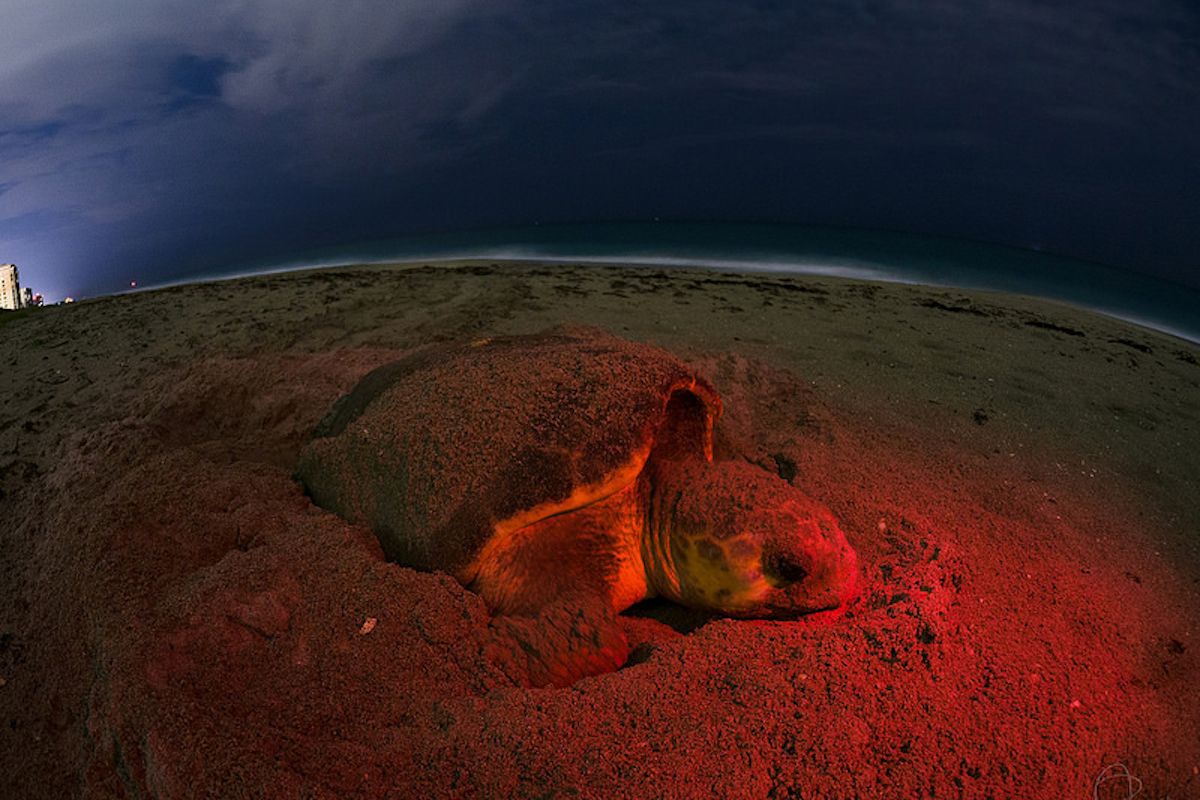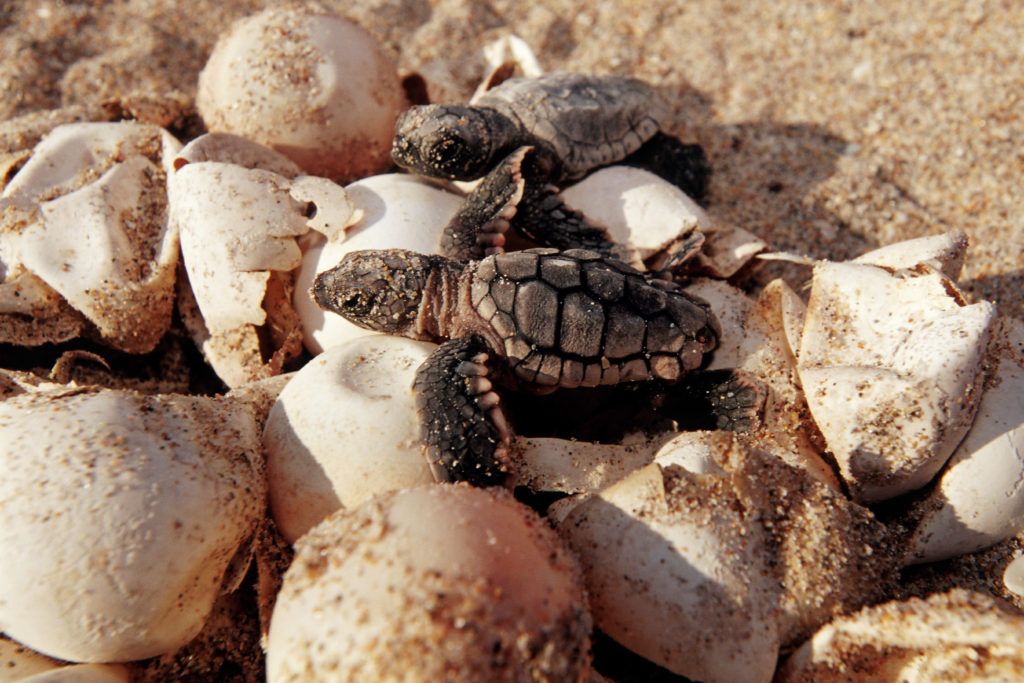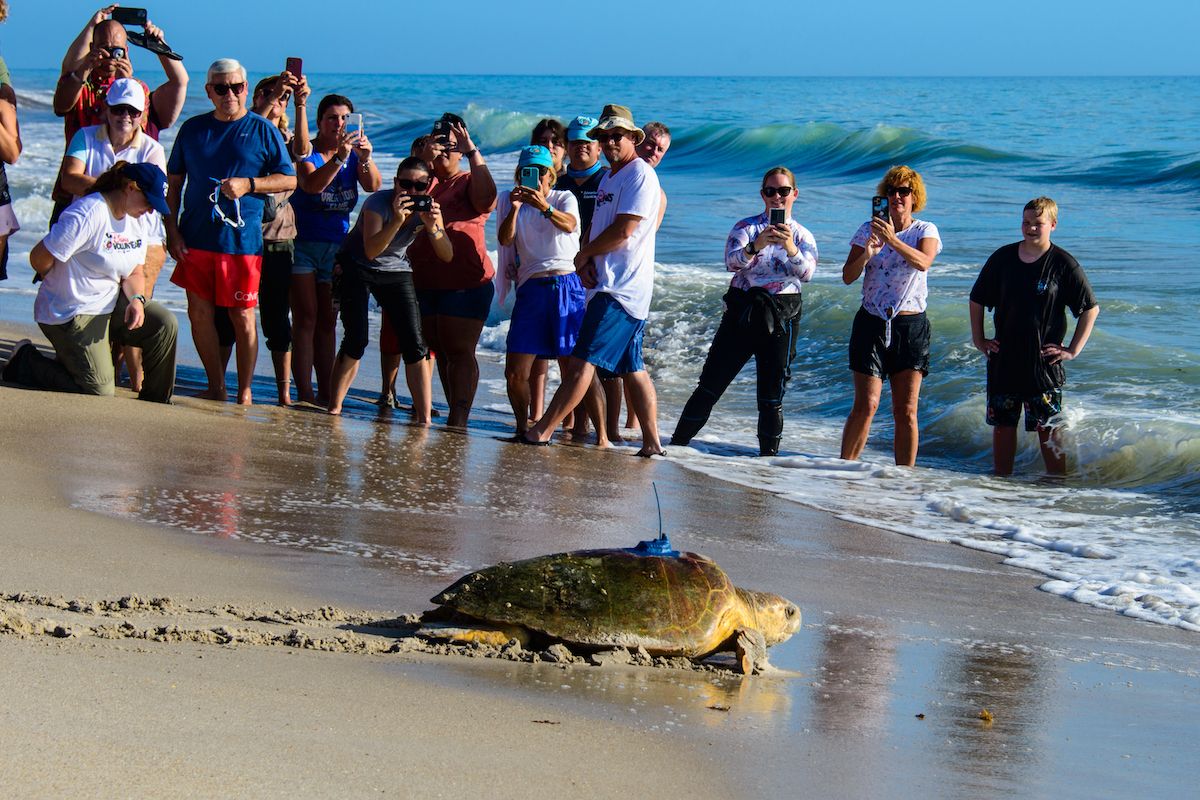Barrier Island Center
Promoting Awareness and Education
The Barrier Island Sanctuary Management and Education Center (Barrier Island Center) is an educational center located in the heart of the Archie Carr Refuge, a major nesting site for sea turtles. Through a partnership with the Brevard County Environmentally Endangered Lands Program (EELS), the Sea Turtle Conservancy manages and conducts the educational programs offered at the Barrier Island Center. As the human population on Brevard County’s coast continues to grow, STC and the Barrier Island Center will play an increasingly important role in protecting the fragile barrier island and its globally important sea turtle nesting beaches.
The Barrier Island Center is a focal point for the Archie Carr National Wildlife Refuge and the associated barrier island by providing exhibit space, a presentation hall, a small research library and ongoing educational programs that promote stewardship of the area’s fragile natural resources. The Barrier Island Center hosts visiting school groups from throughout Brevard County, as well as local residents and tourists. The facility, its gift shop and its exhibits are open to the public.
The Barrier Island Center would not have been possible without the generous support of the Richard K. Mellon Foundation. The Mellon Foundation purchased the abandoned “Chuck’s Steakhouse” and donated the parcel to Brevard County for the purpose of building and operating an educational facility. The County also owns two adjacent parcels stretching across the narrow barrier island—from the Indian River Lagoon to the Atlantic Ocean. The proximity of these adjacent public lands will allow visitors a unique interpretive hiking trail that weaves through a cross section of all the barrier island habitats.
Barrier Island Center: Hours & Directions
Barrier Island Center
8385 S. Hwy A1A
Melbourne Beach, FL 32951
321-723-3556
Center Hours:
Tuesday through Sunday
9:00 AM – 5:00 PM
Closed Monday
Trail Hours:
October – April: 7:00 AM – 6:00 PM
May – September: 7:00 AM – 8:00 PM
Contact STC:
Sarah Rhodes-Ondi
Community Stewardship Coordinator
Sea Turtle Conservancy
Email: sarah@conserveturtles.org
Sea Turtle Nesting Season
In addition to Florida being a great place to enjoy the sun and surf, Florida’s beaches are important nesting areas for sea turtles, and the sand dunes are home to many unique plants and animals.
During a visit, please help protect Florida’s sea turtles, other wildlife and the coastal habitats upon which they depend. The sea turtle nesting season in Florida runs from March through October on the Atlantic coast, and from May through October on the Gulf coast. During the sea turtle season, please remember a few simple things to help protect these magnificent creatures and their habitat:
- It is against the law to touch or disturb nesting sea turtles, hatchlings, or their nests. Sea turtles are protected by both the Federal Endangered Species Act and the Florida Marine Protection Act.
- If you see an injured or dead sea turtle, call the Florida Fish and Wildlife Conservation Commission 1-888-404-FWCC (3922) or *FWC from your cell phone. Please be prepared to answer the following questions: What is the exact location of the animal? Is the turtle alive or dead? What is the approximate size of the turtle? Is the turtle marked with spray paint? (This indicates that the turtle has been documented.) What is the location of the closest access point to the turtle?
- Avoid going to the beach at night. If you must be on the beach at night, limit your walking and do not use flashlights or flash photography. The light may cause the female to abort the nesting process, or other sea turtles nearby may be discouraged from nesting if there are lights on the beach.
- Turn off outside patio lights and shield indoor lights from shining directly onto the beach by closing the drapes at night. Lights disturb nesting sea turtles and hatchlings. Many coastal counties and cities have lighting ordinances that help reduce beachfront lighting. Please make sure your beachfront lights are in compliance with the law.
- While enjoying the beautiful beaches during the day, avoid disturbing marked sea turtle nests, and please take your trash with when you leave the beach.
- When crossing a dune, please use designated cross overs and walk ways. Do not climb over the dunes or disturb the dune vegetation.
- List of organizations that have been permitted by the Florida Fish and Wildlife Conservation Commission to conduct public turtle watches.
Learn How You Can Help
The Barrier Island Education Center, located in the Archie Carr National Wildlife Refuge, is vital in preserving Florida’s sea turtle nesting habitat. By volunteering, you can help educate visitors about the importance of protecting these endangered species and contribute to the long-term health of this crucial environment. As the center grows, it offers opportunities to lead guided walks, assist with educational programs, and engage with both locals and tourists. Your time can directly impact the future of sea turtle conservation and support a thriving community of conservationists. Volunteer today and be part of a mission that makes a real difference! Current volunteers can login using the link below.






